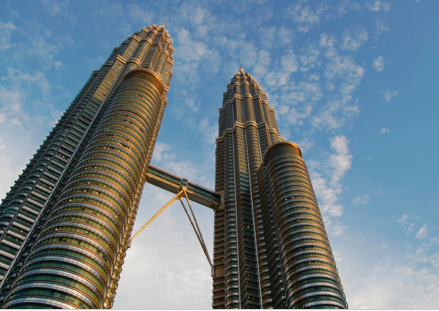 Here is another article researched and written by our assistant Maria — this time about Malaysia’s top export industries, trends, labor costs, and logistical issues.
Here is another article researched and written by our assistant Maria — this time about Malaysia’s top export industries, trends, labor costs, and logistical issues.
Malaysian Exports: Electronics remain at the helm
The electrical and electronics (E&E) industry plays a huge part in many aspects of Malaysian economy. As its leading manufacturing sector, its significant contributions include sizable manufacturing output, widespread provision of employment, and a big chunk of the export business. It may not take up as much as it used to, but its products remain to be Malaysia’s top export, making up as much as 32.9% of total exports.
What kind of products are being exported under this sector? A wide range. As of late, the E&E sector has started production of several semiconductor products such as photovoltaic cells and modules, high-end consumer electronics, and information and communication technology (ICT) products.
Recently, shares in the export market has become more equitable, with the following sectors just trailing behind E&E in terms of volume of export (based on 2013 data provided by Malaysian External Trade Development Corporation):
- Refined petroleum products – 9.1%
- Liquefied natural gas – 8.2%
- Chemicals and Chemical Products – 6.6%
- Palm Oil – 6.4%
- Crude Petroleum – 4.4%
- Metal Manufactures – 3.9%
- Machinery, Appliances, and Parts – 3.8%
- Optical and Scientific Equipment – 2.9%
- Rubber Products – 2.6%
- Other Products – 19.2%
Manufacturing zones
For years now, Malaysia has been implementing a geographical division system for its five economic zones. Called economic corridors, they were instigated under the Ninth Malaysia Plan mainly to bridge the widening gap in development imbalances throughout the country. Its implementation has been instrumental in pushing forward economic growth with the help of public-private partnerships.
If we look for manufacturing activities over the map, two out of the five regions have been strategically focused on assembly, testing, design and development work involved in the production of component parts and system: the Northern Corridor Economic Region and the East Coast Economic Region.
Opportunities found on the Northern Corridor Economic Region include Collaborative Research in Engineering, Science and Technology (CREST), Machinery and Engineering Services, Electrical and Electronics, Agri-Biotechnology, Biotech Centre, and Industrial Park Initiatives.
The East Coast Economic Region, meanwhile, has concentration on the following manufacturing activities: Food and Halal project initiatives, Handicrafts industry initiatives, Boat building and repair parks, Automotive/Transport Equipment Initiatives, Rubber Wood Cluster Palm Oil Industry Cluster (POIC), Expansion and Development of Industrial Estates, and Free Zones.
Relatively high salaries in the manufacturing sector
On the macro level, the manufacturing industry is relatively lucrative. But are employees well compensated?
According to the Department of Statistics Malaysia, in 2013, the average monthly income of workers in the manufacturing industry was recorded at 2,616 MYR or 793 USD.
Meanwhile in a report by Free Malaysia Today, the current average monthly household income in Malaysia is 5,000 MYR or 1,500 USD. Kuala Lumpur, the country’s capital city, offers an average monthly household income of 2,600 USD.
This is, however, in pale comparison with its state neighbour, Singapore, which has an average salary of 2,300 USD per month. But Malaysia’s minimum monthly salary is within the same range as that of Thailand (1,000 USD) and higher than neighbouring states such as the Philippines (264 USD) and Vietnam (165 USD).
Malaysia’s ports
Through the ebbs and flows of global economies, Malaysian ports have shown to be consistently producing great financial results. As opposed to their shipping counterparts, they have a greater hedge against economic turmoil, mainly due to a more structured container handling fee system.
Malaysia has 33 ports and among these, Port Klang is considered to be the biggest. It is the main sea gateway into Malaysia. Apart from Port Klang, there are five other major ports: Penang, Tanjung Pelepas, Johor, Bintulu, and Sepangar Bay Container Port.

Backed up by Cushman & Wakefield’s 2014 report naming Malaysia as the world’s best value manufacturing destination: http://www.asiabriefing.com/news/2014/03/malaysia-ranked-worlds-best-manufacturing-destination/
Thanks for adding to this article.
monthly minimum wage of $1000 in thailand? where do u pull these numbers from? LOL.